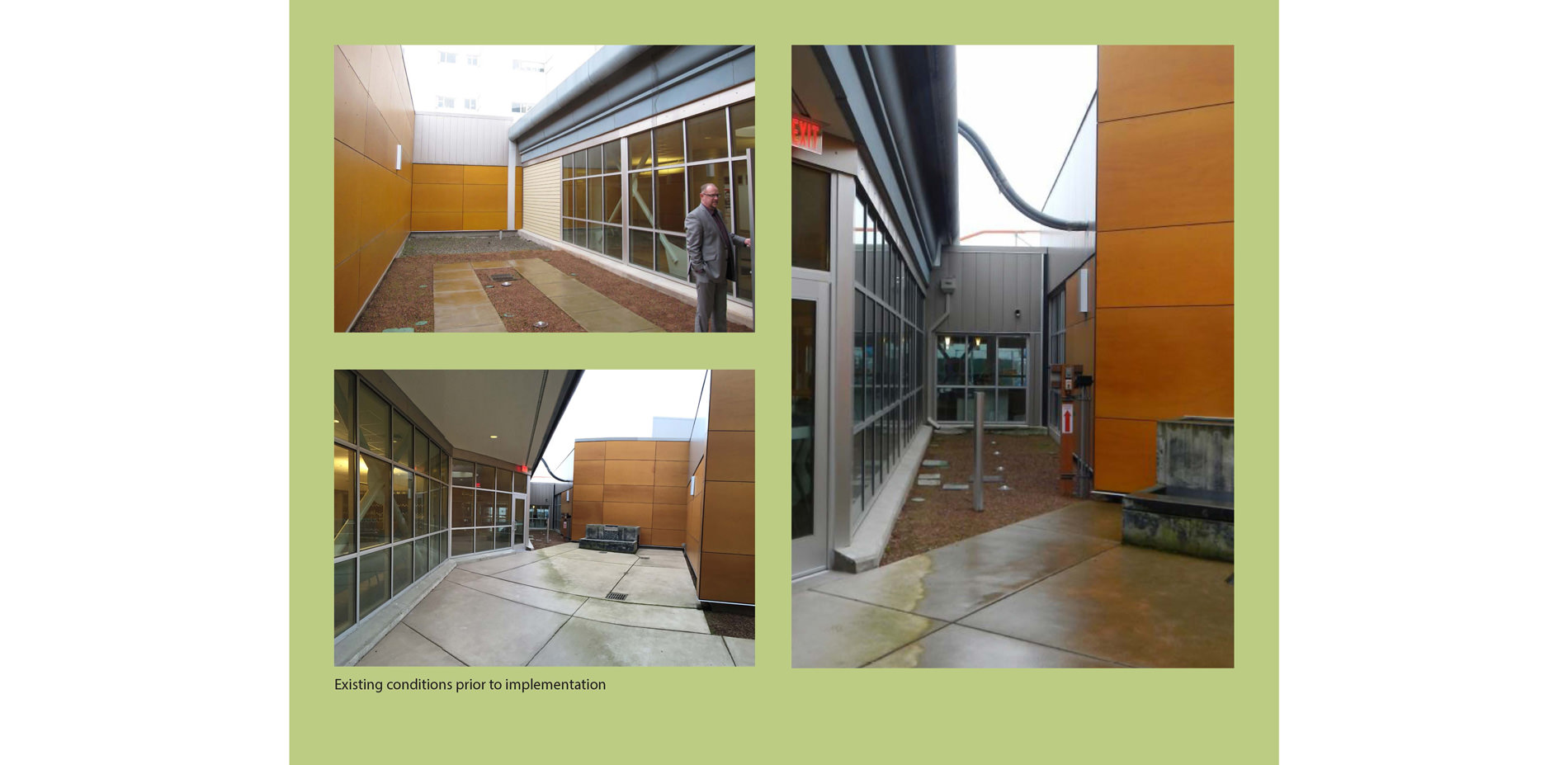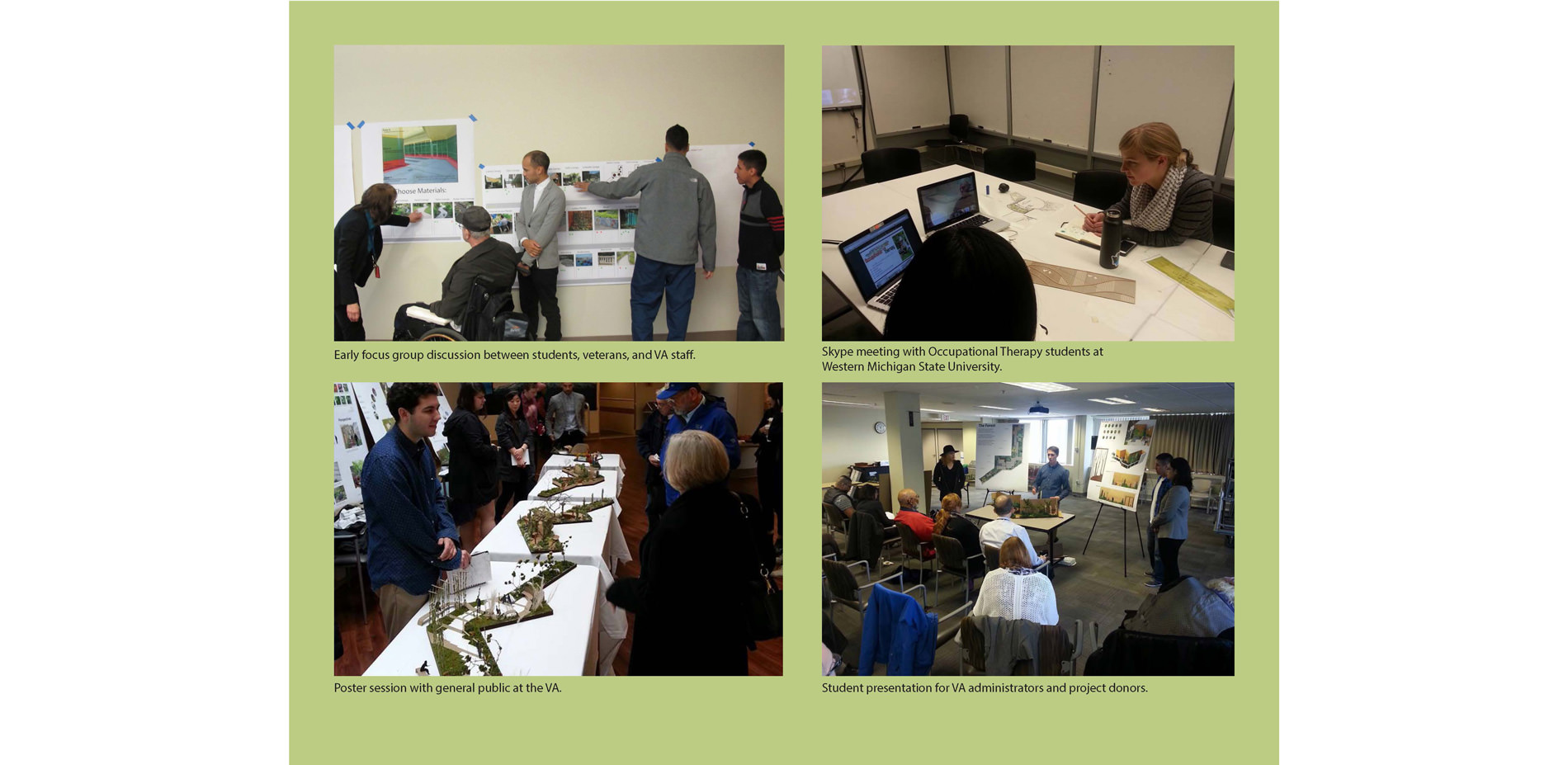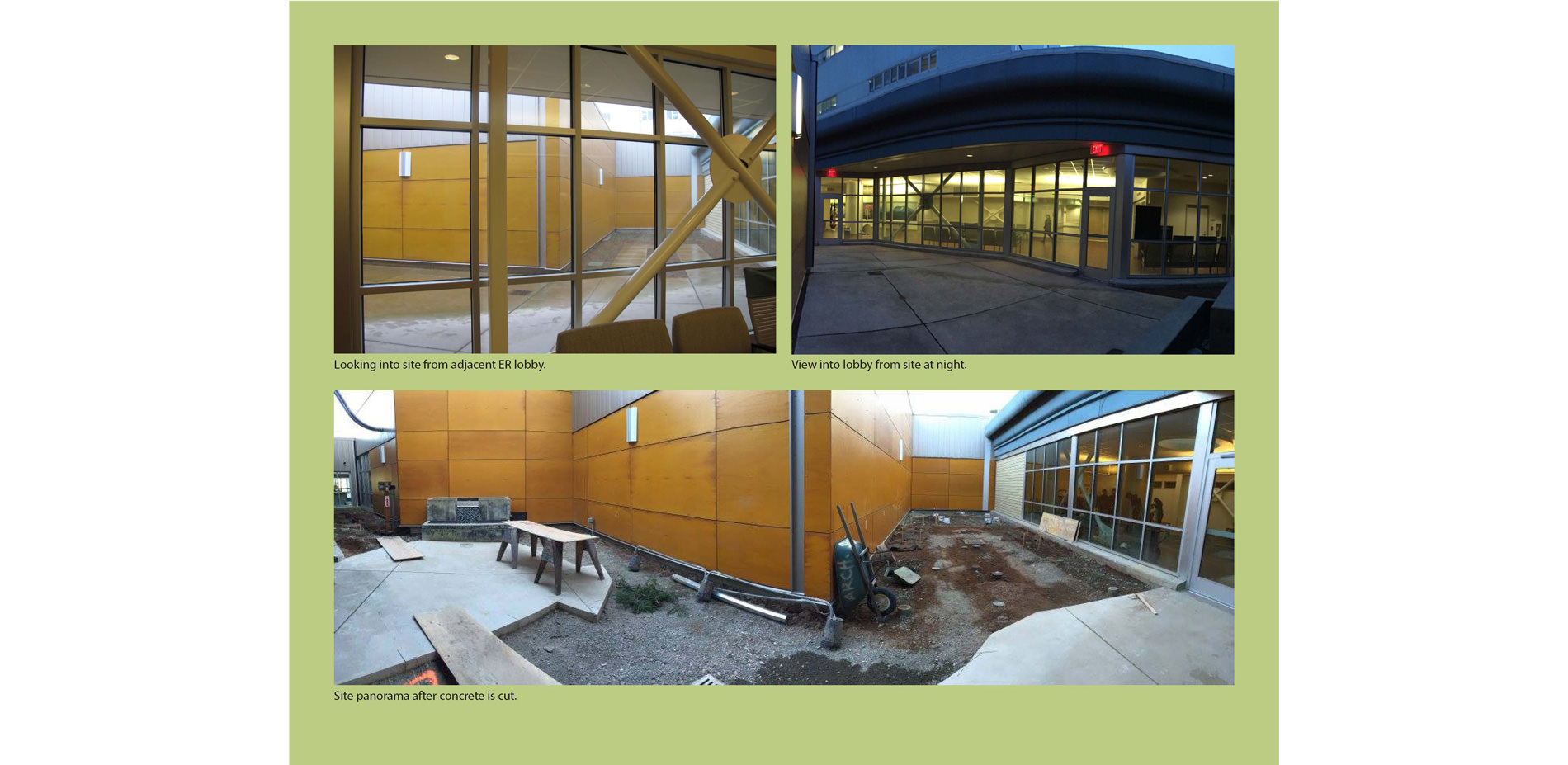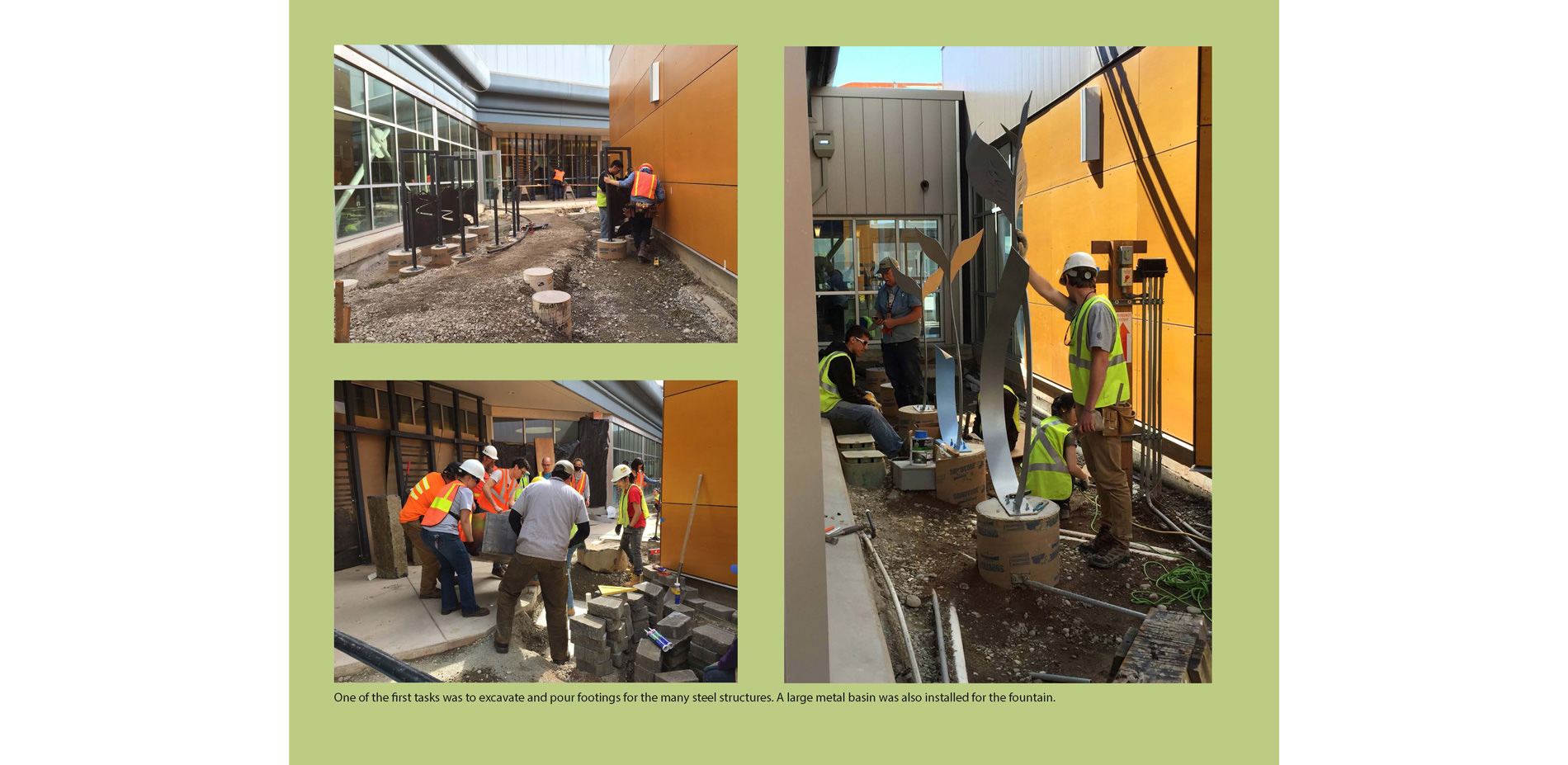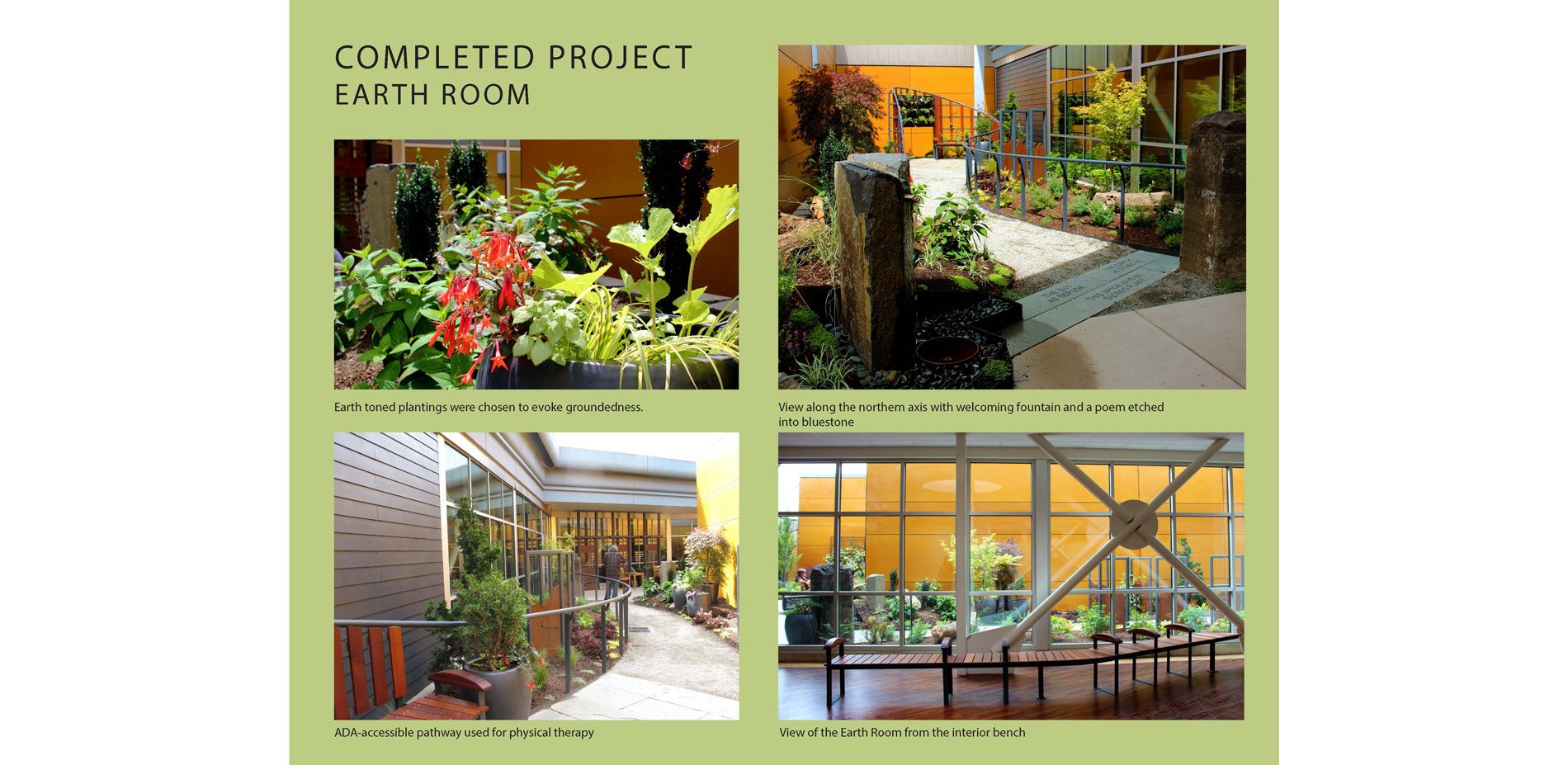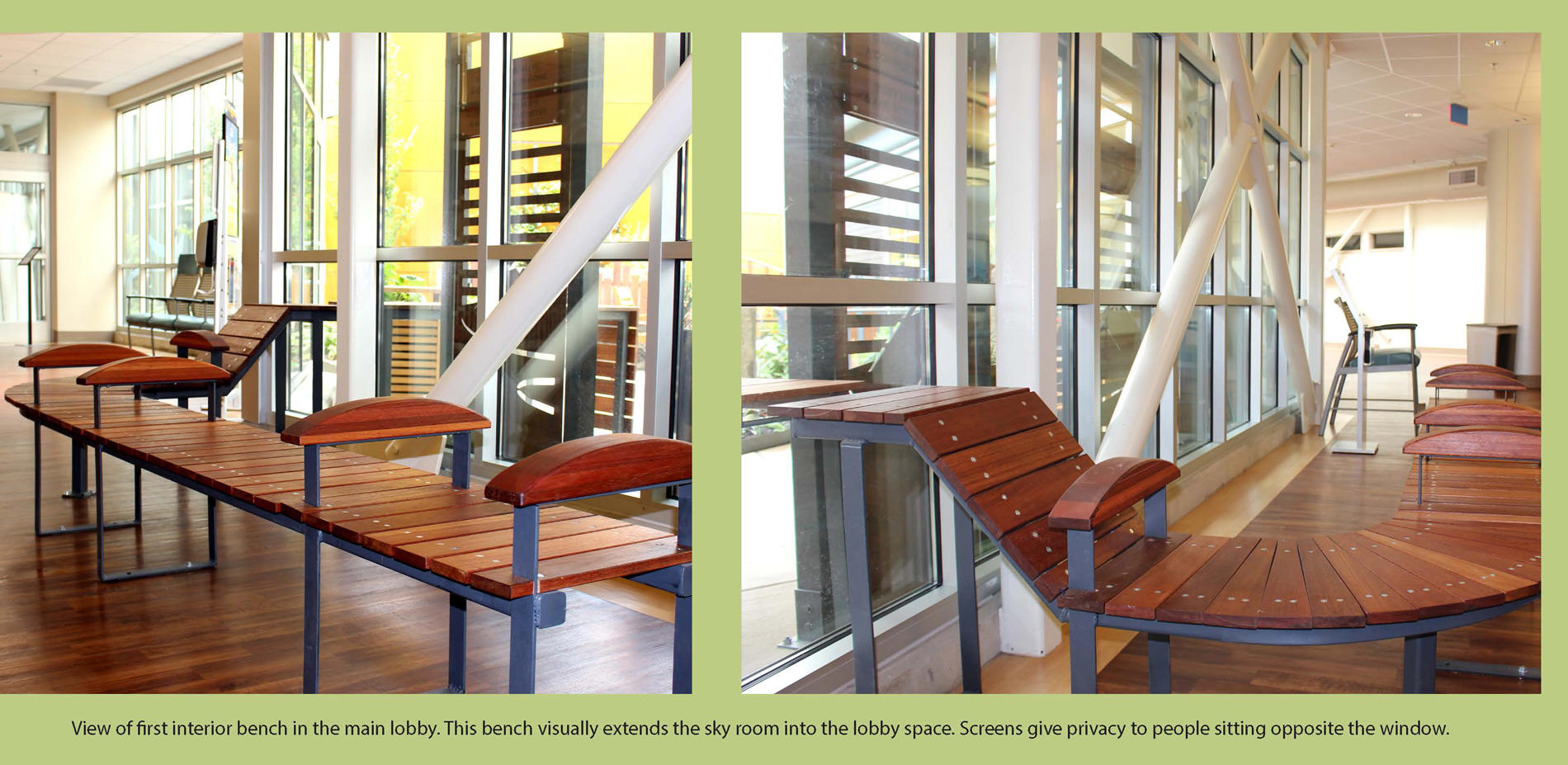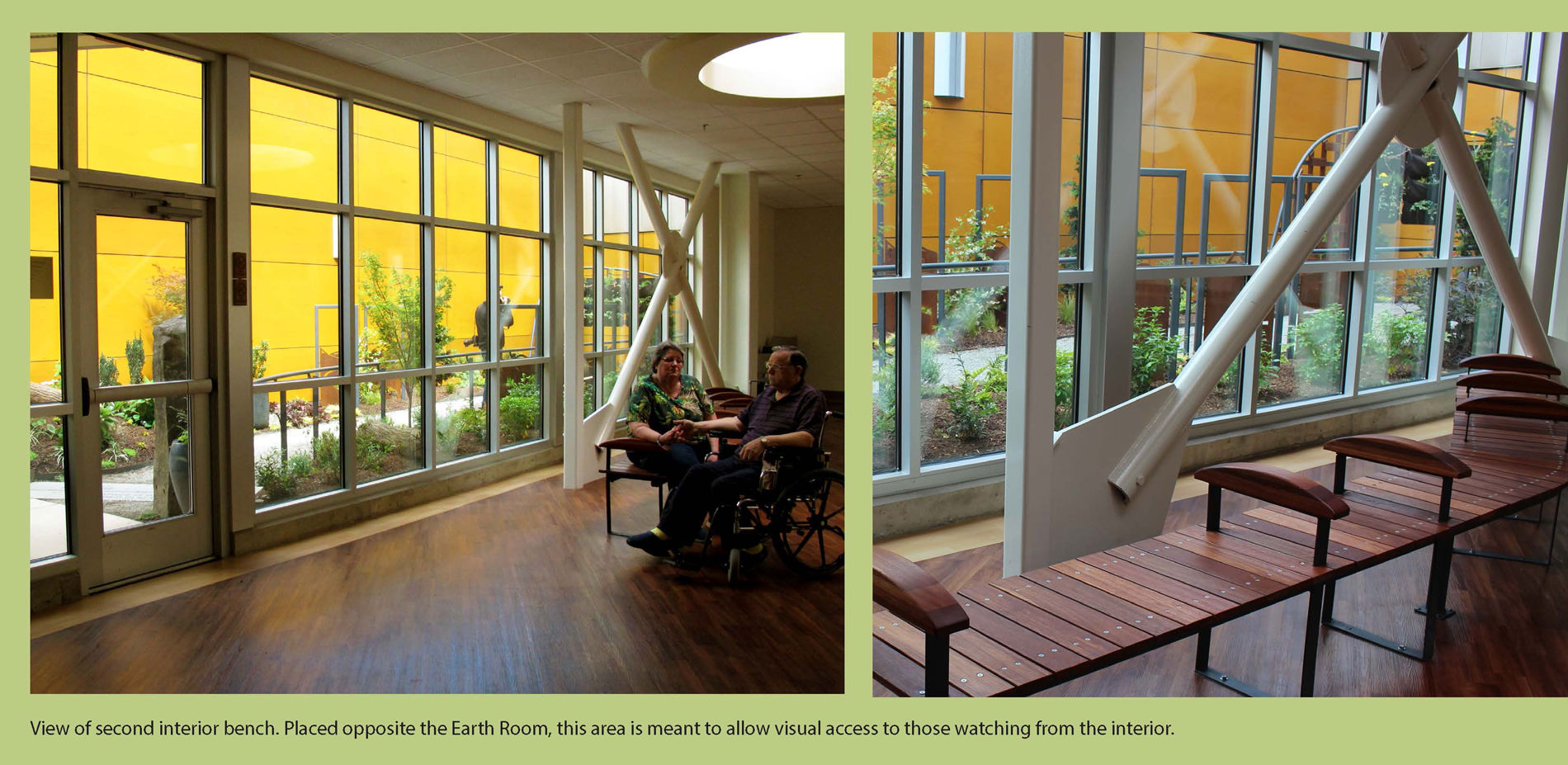Earth and Sky Garden: A Therapeutic Garden for the Puget Sound Veteran's Affairs Hospital
HONOR
Student Community Service Award
Puget Sound, WA, USA | Team: Dominique Alviar, Associate ASLA; Colleen Brennan, Student ASLA; Byron Brink, Associate ASLA; Shan Gao, Student ASLA; Shuyi Gao, Student ASLA; Fern Huynh, Associate ASLA; Gina (Esther) Kim, Student ASLA; Yae Lee, Student ASLA; Arisa Nakamura, Associate ASLA; Lyna Nget, Student ASLA; Eunjee Oh, Associate ASLA; Jae Jung Park, Student ASLA; Aryuna Poselenova, Associate ASLA; Hayden Tauscher, Student ASLA; Andrew Ung, Associate ASLA; Jianghezi Zheng, Associate ASLA | Client: VA Puget Sound Health Care System | Faculty Advisors: Daniel Winterbottom, FASLA; Jeremy Watson; Scott Jones, Patrick McCleary
University of Washington
What we see here was not a vision imposed on the clients, but the outcome of information gathered from focus groups of veterans and staff.
- 2017 Awards Jury
PROJECT CREDITS
- University of Washington Design/Build Program
- Staff of the Puget Sound VA
PROJECT STATEMENT
The relentless demands of working in a hectic hospital environment and the stress of an agonizing wait for a diagnosis can be mediated through interaction with green refuges. The Earth and Sky Garden, a capstone design build project for the Puget Sound Veteran’s Affairs Hospital is located in a courtyard adjacent to the main entrance and emergency department. The site serves family, staff and patients who have post-traumatic stress disorder and/or other diagnoses. This garden offers respite, calming and a verdant peaceful refuge. Reconnecting users to the natural landscape, the design concept metaphorically and physically orients visitors to the sky and earth. The garden symbology epitomizes the Pacific Northwest landscape through use of native plants and materials including, wood and basalt columns and paving. The steel screens were designed to visually reference the earth and sky with their imagery of mountains and rivers; representing a coming home to the majestic Pacific Northwest as requested by the participants. Revealed in the seating, paving, and inside/outside forms, a seamless transition between the garden and hospital was achieved
PROJECT NARRATIVE
Design Program GoalsProgrammatic goals include providing a calming refuge and place of respite, place to increase social interaction, spaces for meditation and a green counterpoint to the institutional quality of the hospital environment. The site is an enclosed courtyard space flanked by floor-to ceiling windows along its border, and a secondary goal was to incorporate privacy screening for garden users while simultaneously offering a pleasant, meaningful view from those indoors.
Garden users are varied in their needs and abilities and the principle of universal design was applied throughout our garden to ensure enjoyment by all in an equitable manner. Pathways, furniture, integrated handrails, and structures were all designed to be accessible for those using wheeled mobility devices, canes, or crutches. Careful consideration was made to ensure that the design and siting of elements in the garden posed no potential traumatic emotional triggers for individuals with post-traumatic stress disorder.
The wood furniture was designed and intentionally placed to create both physical and visual links that integrate inside to outside.
Method
At the onset of the project, we recognized that the experiences of veterans were profound and varied, producing a complex range of physical, sensory, and mental health diagnoses that we as a design group had little understanding of. In order to determine and better understand how the garden could help to ameliorate these complex issues, we gathered information on multiple levels. First, we disseminated a survey with questions about specific needs, challenges and activities potential users would desire and prepared visual preference boards for stakeholders to rank. Focus groups were held with veterans and staff from the hospital who responded to queries about their aesthetic preferences (e.g., lighting, water, paving, seating) for design elements, as well as shared their views of meaning and symbols that should be incorporated into the garden. From the surveys, visual preference boards, and focus groups, we discovered that there was a strong desire for including running water, lush plantings regionally appropriate materials, specific imagery, and opportunities for both privacy and gathering within the garden. The same participants evaluated the design proposals and gave direction for the preferred alternative.
We gained additional research-based information by collaborating with graduate students in an occupational therapy program from another University. The students were essential in providing guidelines for design on a human scale, informing us of dimensions necessary for our design to be comfortable and universally accessible. A team of students working on the project visited the facilities for occupational and physical therapy within the hospital to better understand how the physical rehabilitation process occurs and how indoor clinic elements could broadly be incorporated into the garden. Wheelchairs were brought into the space to experience first-hand, what it was like to move about the courtyard. It was clear that this garden would fill a unique gap within the hospital for healing of the mind and body. We were also honored to have access to personal letters written by veterans throughout history, the oldest being from the Civil War. These letters provided precious anecdotes of the healing effects of nature on the mind and body. These letters, combined with the personal accounts from veterans we met throughout the participatory design process, inspired our purpose for designing. The final result would not have been successful without close and frequent collaboration with the veterans, our occupational therapy student colleagues, and therapists at the Puget Sound Veteran’s Affairs Hospital who so graciously and helpfully informed our project. Design Intent
The Sky Room evokes feelings of openness and lightness. Despite the small size of the garden space, the buildings beautifully frame the sky, providing a sense of escape as one gazes upwards. The Sky Room is the destination for social interaction, shared meals, larger group activities, and small events. Movable tables and chairs allow people to play board games or have a place to sit and enjoy their coffee. A 30 degree reclined back on the curving benches draws the eye to the sky and also relieves low back stress. Eliminating arm rests on the ends of the benches enable those using wheelchairs to easily transfer from their chairs to the bench. A purposefully designed space between the benches is for wheeled-mobility users to sit and actively socialize with others sitting on the bench.
On route to the Earth Room, LED lite screens and path lighting allows for night visitation, and graceful hand rails provide safety for anyone with balance or mobility difficulties. The Earth Room grounds users in this protected space and invokes feelings of connection to soil, stone and vegetation. Densely planted berms enhance the feeling of being immersed within the landscape. Through the initial stakeholder meeting, we learned that there was strong preference to include a green wall, voluntary plant maintenance, and opportunities for interaction with nature and wildlife. We also found through research that therapeutic gardening can be particularly helpful for Veterans with physical and mental health challenges. The Earth Room’s green wall was conceived as an opportunity for physical and occupational therapy in a small space. An opening along the bottom of the wall allows users in wheelchairs to roll under the wall and then reach up and touch the aromatic herbs while directly facing the plants, rather than having to uncomfortably torque their bodies by sitting sideways to the garden, which is typical of most raised bed gardens. Sensitivity to the complex needs of the user group was evident in the inclusion of these universally designed features throughout the garden. The forest room is furnished with sculptural elements representing birds in flight, small trees, bushes, and low perennial plantings. Designed as a viewing garden, it is visible from the interior corridors and through floor to ceiling windows in the emergency department.
Implementation
Over ten weeks of the Spring quarter the students fabricated and installed the entire garden. Using low tech, shovels, picks and MIG welding machines, and high tech, CNC and laser jet cutting machines to create steel screens, furniture, paving and a water feature. Students sought material donations and a local contractor donated the concrete cutting while another the irrigation and lighting. Students working in fabrication teams on site and in the Universities fabrication shops. Students alternated through the differing tasks to experience the breath of craft and complete the project on time. Local Native American veterans conducted a traditional blessing prior to the opening of the garden.
Maintenance/ monitoring (is this important? No plans to monitor that i know of, though that would be interesting)
The garden is being maintained by the VA facilities department using the maintenance manual created by the students and supplied to the VA by the studio. In the future we hope to work with the VA to conduct evidence-based research studies on user impressions of the garden.
PRODUCTS
FURNITURE
- Landscape Forms
IRRIGATION
- Advanced Irrigation
LUMBER/DECKING/EDGING
- Dunn Lumber
SOILS
- Cedar Grove Compost
HARDSCAPE
- Rock Mountain
LIGHTING
- Advanced Irrigation
